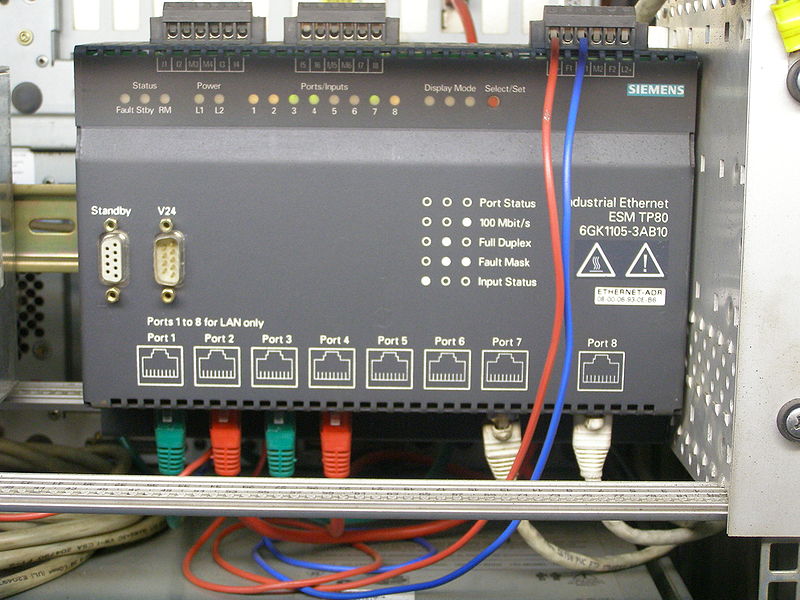Everything You Need To Know About Industrial Ethernet Switches: A Comprehensive Guide

Industrial Ethernet Switches
Introduction to Industrial Ethernet Switches
As the world becomes more and more digitized, the need for Industry 4.0 grows. Industry 4.0 is the term given to the fourth industrial revolution, in which machines are becoming increasingly connected and autonomous. This requires new types of equipment and infrastructure, one of which is an industrial Ethernet switch.
An industrial Ethernet switch is a network switch that is designed to be used in industrial environments. These switches are ruggedized to withstand harsh conditions, and they often have additional features that make them suitable for use in industrial applications. For example, industrial PoE switch support PoE+, which allows them to power devices such as IP cameras or wireless access points.
If you’re looking to install an industrial Ethernet switch in your facility, there are a few things you need to keep in mind. First, you need to determine what type of switch you need. There are managed and unmanaged switches, and each has its own set of benefits and drawbacks. Second, you need to make sure that the switch you choose is compatible with your existing network infrastructure. And finally, you need to decide what features are most important to you – do you need PoE+ support? Redundant power supplies? DIN-rail mounting? Once you’ve considered all of these factors, you’ll be able to choose the perfect industrial Ethernet switch for your needs.
Different Types of Industrial Ethernet Switches
There are several different types of industrial Ethernet switches on the market today. Here is a brief overview of the most popular types:
Managed Ethernet Switches: These switches offer advanced features such as quality of service (QoS), security, and remote management. They are ideal for applications that require high performance and reliability.
Unmanaged Ethernet Switches: These switches are simple and easy to use. They don’t offer any advanced features, but they are perfect for small or medium-sized networks.
Modular Ethernet Switches: These switches offer flexibility and scalability for large or growing networks. They come with a variety of modules that can be added or removed as needed.
PoE Ethernet Switches: These switches provide Power over Ethernet (PoE) to devices such as IP cameras and VoIP phones. This can save you money by eliminating the need for separate power cables.
Features of Industrial Ethernet Switches
Industrial Ethernet switches offer many features that make them ideal for use in industrial settings. Some of the most notable features include:
– Rugged design: Industrial Ethernet switches are designed to withstand harsh conditions, including extreme temperatures, vibrations, and shocks. This makes them ideal for use in industrial environments where standard Ethernet switches would not be able to stand up to the rigors of the environment.
– Redundant power inputs: Most industrial Ethernet switches come with dual power inputs, which provides redundancy in the event that one power source fails. This is critical in mission-critical applications where downtime is not an option.
– Wide operating temperature range: Many industrial Ethernet switches are rated for operation in temperatures ranging from -40°C to +85°C, making them suitable for use in a wide variety of environments.
– High port density: Industrial Ethernet switches often offer a high port density, meaning that they can support a large number of devices on a single switch. This is ideal for applications where space is limited or there is a need to connect a large number of devices.
How to Choose the Right Switch for Your Application
When it comes to choosing an industrial Ethernet switch, there are a few key factors to keep in mind. Here are a few tips to help you choose the right switch for your application:
- Determine Your Network Requirements
The first step is to determine your network requirements. What kind of data will be passing through the switch? How much data will be passing through the switch? What are the bandwidth requirements? Knowing the answers to these questions will help you narrow down your options and choose a switch that is capable of handling your specific needs.
- Consider The Environment
Another important factor to consider is the environment in which the switch will be used. Will it be used in a dusty factory setting or in a clean office environment? Will it be exposed to extreme temperatures or humidity? Choosing a switch that is designed for use in harsh environments can help ensure reliable operation.
- Select The Appropriate Port Type
There are several different types of ports available on industrial Ethernet switches. The type of port you need will depend on the devices you plan to connect to the switch. For example, if you need to connect devices with fiber optic cable, you will need a switch with SFP+ ports. Knowing what type of ports you need can help you narrow down your choices and find aswitch that offers the right mix of ports for your application.
- Consider Management Options
Some industrial Ethernet switches offer management features that can make it
Conclusion
Industrial Ethernet switches offer a reliable, cost-effective way to keep your business connected. This comprehensive guide has provided you with all the information and resources you need to make an informed decision about which type of switch is best for your needs. Whether it’s PoE or non-PoE versions, managed or unmanaged models, there are plenty of options available for connecting your business securely and efficiently. With the right industrial Ethernet switch in place, you can rest assured that your data will remain safe and secure, allowing for smooth operations across the board.








